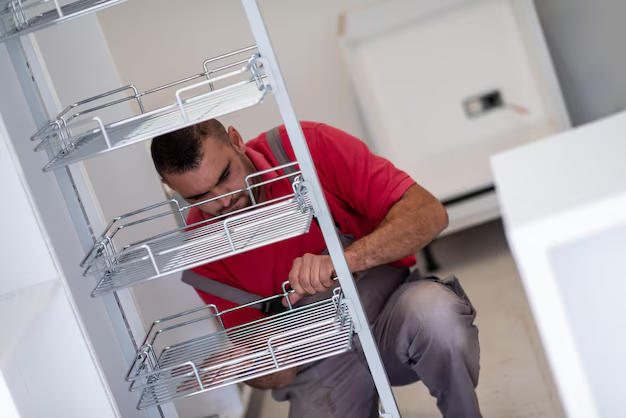DIY Guide: How to Build Your Own Small Refrigerator
In today’s world, where sustainability and customization take center stage, many adventurous DIY enthusiasts are exploring the art of crafting their own appliances. Among these creations, the small refrigerator stands out—not only for its practicality but also as a rewarding project that complements your specific needs. Whether you're looking to understand refrigeration basics or aiming for an off-grid cooling solution, this guide will walk you through the comprehensive process of building your own small refrigerator.
Understanding Refrigeration: The Basics
To effectively embark on this DIY journey, it’s essential to grasp the fundamentals of refrigeration. A refrigerator functions by removing heat from an enclosed space and expelling it to the outside environment. This cycle typically involves three key components:
- Compressor: Compresses the refrigerant, raising its temperature and pressure.
- Condenser: Cools the refrigerant, turning it into a liquid.
- Evaporator: Evaporates the refrigerant, absorbing heat and cooling the interior.
Why Build Your Own Refrigerator?
Before diving into the construction, it’s worth considering why one might choose a DIY approach. Here are a few reasons:
- Customization: Tailor the size and features to suit your unique space requirements or design preferences.
- Cost Efficiency: Potentially save money compared to purchasing a high-end small fridge.
- Sustainability: Use recycled materials and energy-efficient components.
- Learning Experience: Gain valuable insights into how cooling systems operate.
Gathering the Necessary Materials
Building a refrigerator from scratch requires some specialized materials and equipment. Here's a checklist to get you started:
Essential Components:
- Peltier Cooling Modules: Ideal for small refrigeration projects due to their compact size and efficiency.
- Heat Sinks and Fans: Essential for dissipating heat generated by Peltier modules.
- Thermal Paste: To improve heat conduction between modules and heat sinks.
- Insulation Foam: Ensures that your fridge retains the cool air inside.
- Power Supply: A stable DC power source compatible with your chosen components.
Tools You'll Need:
- Screwdriver Set: For assembling and securing different parts.
- Multimeter: To measure electrical values and ensure connections are correct.
- Drill and Bits: For creating mounting points or adjusting fittings.
- Wire Cutter/Stripper: To prepare electrical connections.
Step-by-Step Assembly Guide
Creating your own mini fridge is a hands-on task, but with careful planning and execution, it can be a fun endeavor. Below, we break down the steps to make your very own small refrigerator:
Step 1: Designing the Structure
Begin with a blueprint of what you envision. Consider the capacity you need and the space where it will be used.
- 📏 Dimensions: Determine enough space for your cooling modules and insulation.
- 🎨 Exterior Design: Choose suitable materials for the exterior casing, such as lightweight plastic or metal, considering durability and appearance.
Step 2: Building the Frame
- Cut the Insulation Foam: Using a sharp knife, cut the foam panels to fit the dimensions of your design.
- Assemble the Panels: Using an adhesive, join the panels to form the base and walls of your refrigerator.
Step 3: Installing the Cooling System
- Attach the Peltier Modules: Secure these to your designated cooling area, ensuring proper heat dissipation.
- Apply Thermal Paste: Put a thin layer between the Peltier devices and heat sinks.
- Mount the Heat Sinks and Fans: Fasten them securely to your setup, ensuring they are positioned for optimal airflow.
Step 4: Integrating the Electrical Components
- Wire the Modules: Connect the Peltier modules and fans in parallel to ensure efficient operation.
- Test Power Supply: Use a multimeter to verify connections and voltage before attaching to your power source.
Step 5: Constructing the Door
- Create the Door Panel: Using a suitable material for the exterior, attach hinges to one side.
- Add Sealing Material: Ensure the edges have a rubber or foam seal to prevent air leakage.
Step 6: Testing and Adjustments
Once your fridge is assembled, conduct a series of tests:
- Check for Temperature Stability: Use a thermometer to confirm consistent cooling.
- Review Efficiency: Ensure the system maintains power consumption at expected levels.
- Inspect for Air Leaks: Verify that the door seals effectively.
Enhancing Your DIY Refrigerator
Consider these additional features to enhance functionality and style:
Adding a Thermostat
A programmable thermostat allows better control over the temperature inside your refrigerator, maximizing both efficiency and usability.
LED Lighting
Incorporate energy-efficient LED lights to illuminate the interior without significant energy costs. This can be as simple as a battery-operated strip or a small DC-powered lamp.
Solar-powered Options
For those seeking an off-grid solution, integrating a solar panel setup can make your refrigerator independent of external power sources. This is particularly useful for outdoor or remote-use scenarios.
Practical Consumer Tips 🎯
Here's a quick summary of key takeaways to consider:
- 🔧 Plan and measure: Blueprint your design before cutting materials.
- 🔋 Energy-efficiency: Make use of efficient components like Peltier modules and LED lighting.
- 🌄 Solar compatibility: Consider future adaptability with renewable energy.
- 🕌 User-customized design: Reflect your unique space and style needs in your design.
Staying Safe and Responsible
Remember, working with electrical components requires basic knowledge of circuitry and safety precautions. Always:
- Use protective gear when drilling or soldering.
- Ensure all electrical components are properly insulated.
- Avoid overheating by ensuring adequate ventilation around heat-generating parts.
Building a small refrigerator is not just about understanding the nuts and bolts—it's about fostering creativity, sustainability, and functionality. Whether you're someone who enjoys weekend projects or an enthusiast looking to delve deeper into appliance construction, this journey offers ample learning opportunities. By following this guide, you're equipped to embark on constructing a small refrigerator that's tailored perfectly to your needs. Embrace the DIY spirit, and happy building!
